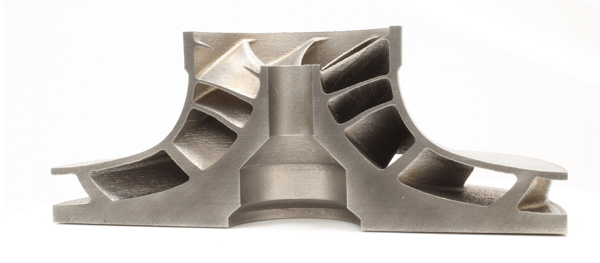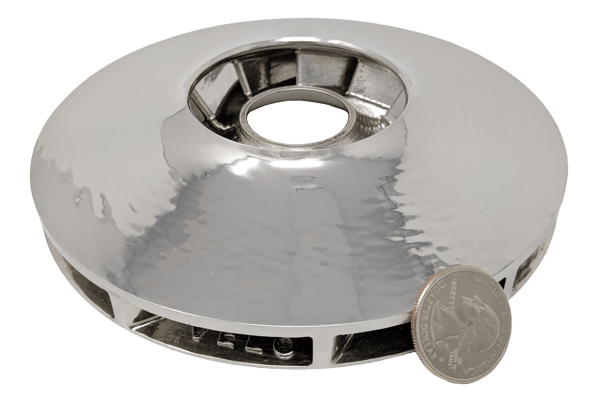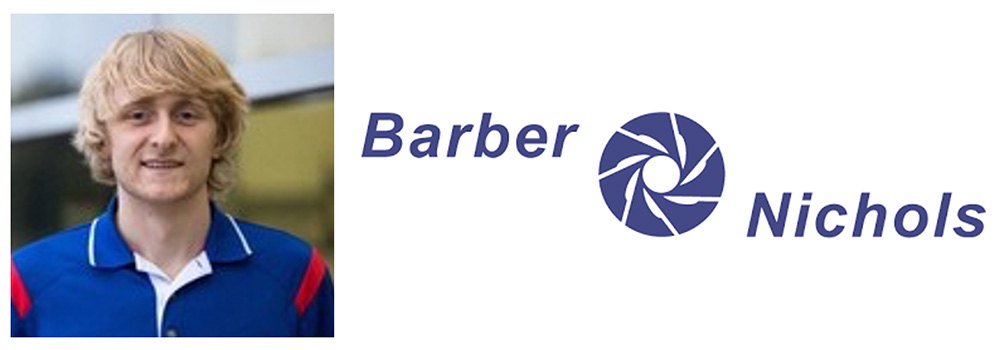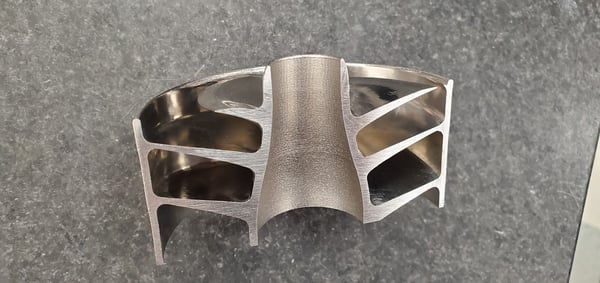Our guest this month is Austin Feathers, who is a manufacturing engineer at Barber-Nichols, a turbomachinery engineering company based in Denver.
- Austin, please tell us about yourself.
I’m an advanced manufacturing engineer at Barber-Nichols Inc. We perform agile turbomachinery system development for aerospace and defense customers, from launch vehicle turbopump to torpedo propulsion. My work is largely focused on helping our small team adopt Additive Manufacturing (AM) as quickly and smoothly as possible. The company has gone from printing our first LPBF component in 2016, to anticipating the first flight of a LPBF turbopump part in 2020. Prior to Barber-Nichols, I worked for the Center for Remote Sensing of Ice Sheets (CReSIS) designing ice-penetrating SAR antenna systems for aircraft. From wideband radar to space propulsion, I have always appreciated the organic, physics-driven solutions enabled by AM. In my free-time, I enjoy home machining and fabrication, as well as the local maker community.
"Barber-Nichols Inc. ... has gone from printing our first LPBF component in 2016, to anticipating the first flight of a LPBF turbopump part in 2020."
Image: Cross-section of a mission-critical, 3D printed, CO2 pump inducer. This is one of the most challenging components that Barber-Nichols currently fabricates through subtractive manufacturing. The ability to print them without support structures is going to be a tremendous enabler and cost saver moving forward.
- How did you get involved with metal AM?
I’ve been a user of AM in one form or another since 2009. At CReSIS, we experimented with metal binder-jetted RF filter and feed components for antenna systems, we also used AM to generate antenna elements and scale aircraft outer mold-lines. At Barber-Nichols, opportunities were immediately apparent to perform tremendous part consolidation, and eliminate costly machining of some particularly tricky aerodynamic features in nickel superalloys. It was clear that our electrochemical machining expertise put us in a unique position to rapidly and inexpensively achieve extremely tight tolerances and fine surface finishes on these consolidated components, and we developed processes from the ground-up to do so. We started with static components of our rotating machinery and are moving quickly into hot and cryogenic rotating components.
- What are you most impressed with when it comes to AM?
AM brings a mind-blowing paradigm shift to the aerospace industry, in that no longer is manufacturing technology the primary limiting factor, but rather the creativity of the engineers and designers. Performance and interface requirements establish boundaries for flows of heat, fluid, and stress, and we are now tasked with finding the most efficient and organic way to accommodate these flows. We used to work at these tasks in a comfortable and constrained box of cast-able or subtractive manufacturable features, but the lid to that box has blown wide open.
"... no longer is manufacturing technology the primary limiting factor, but rather the creativity of the engineers and designers"

- What are the biggest challenges the AM industry faces?
The biggest challenge faced by the AM industry, from our perspective, is the way the technology consolidates the material production and component manufacturing. Especially in the aerospace industry, process control requirements and specifications were cleanly divided between these two processes. Now that practically any company can buy a foundry-in-a-box and produce incredible parts from powder, standards and requirements need to be established to control this entirely new process. The organizations responsible, as hard as they try, are having a really tough time keeping up with the rate of development of these processes. Velo3D is an excellent example. Just as everyone is starting to get their head around LPBF process control specs and requirements, the mold is broken again with a new generation of machine and capabilities.
- What is your perspective on how to address them?
So far, unprecedented collaboration between standards organizations, machine manufacturers, and industry players has been critical to aligning new and effective controls with these evolving processes. This is evident across industries and AM technologies. We believe this accelerated collaborative effort is key to additive adoption and the deployment of more efficient AM aerospace & defense products.

Example of a finished shrouded impeller, another mission-critical application that would be extremely challenging to 3D print without a SupportFree process.
- What do you predict to be the top AM trends for this year and beyond?
I predict that the top AM trend this year will be next-generation LPBF capabilities. Larger build volumes, fewer support structures, better process controls, and meaningful build validation tools. For us, this means that rotating components that were un-printable only two years ago can now be printed and finished at a lower cost, and with potentially higher performance than very expensive machined counterparts. The step-change has arrived, and it’s a race to see who can make the most innovative use of the new technology.
"... rotating components that were un-printable only two years ago can now be printed and finished at a lower cost, and with potentially higher performance than very expensive machined counterparts"





